Do Poodles Have Whiskers? (Do They Grow Back?)
Whether you’re staring deep into your Poodle’s eyes or interested in embarking on grooming them from home, it might get you wondering—do Poodles have whiskers? And should you trim them?
After all, unlike cats, which have long whiskers in part to help them know whether they can fit through tight spaces, a Poodle’s whiskers aren’t prominent. But beneath their adorable curls, Poodles have whiskers. And if you happen to trim them accidentally, they’ll grow back.
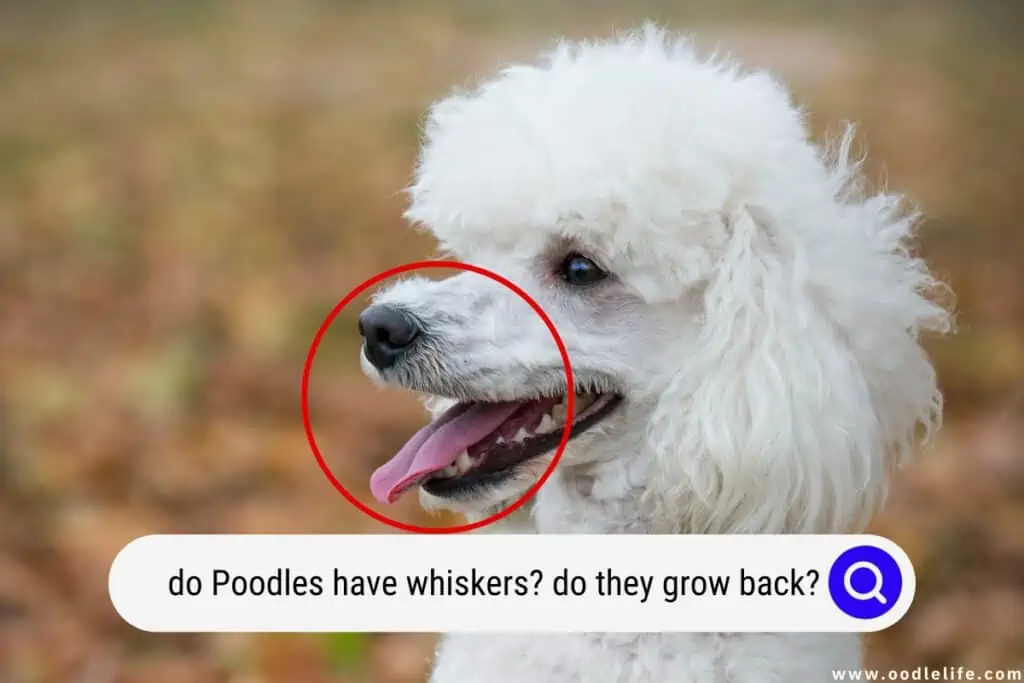
I’ll help you understand the vital role that whiskers play in a Poodle’s life and why it’s best to leave them intact except for a couple of situations.
The Surprising Location of Whiskers
When you think of whiskers, you’re likely picturing thick pieces of hair emerging around your Poodle’s nose and mouth. But did you know that they have four different types of whiskers?
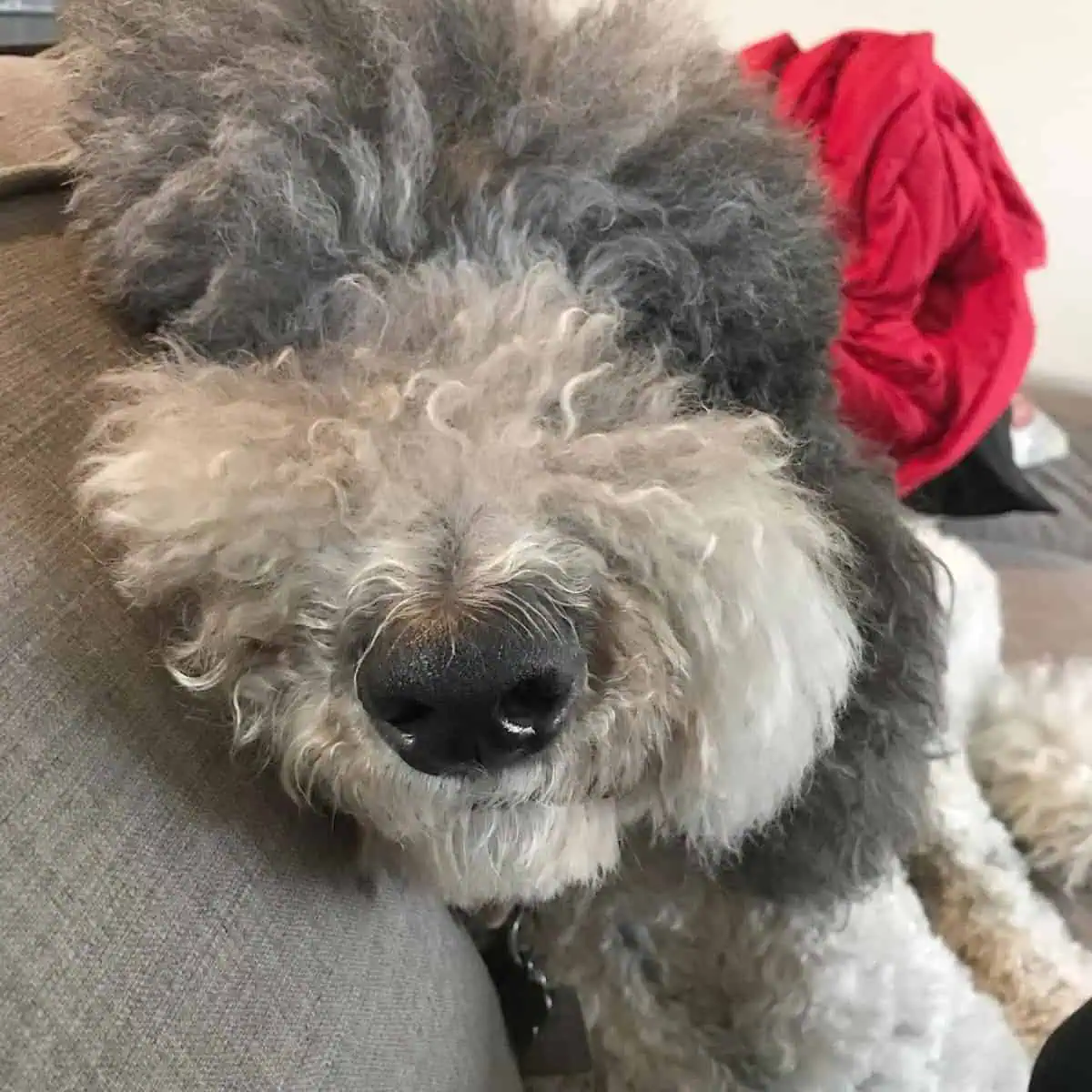
They are as follows:
- Mystacial whiskers
- Interramal tufts
- Suborbital whiskers
- Genal whiskers
Mystacial whiskers are the most common types of whiskers, emerging from where your Poodle’s mustache is if they were to have one.
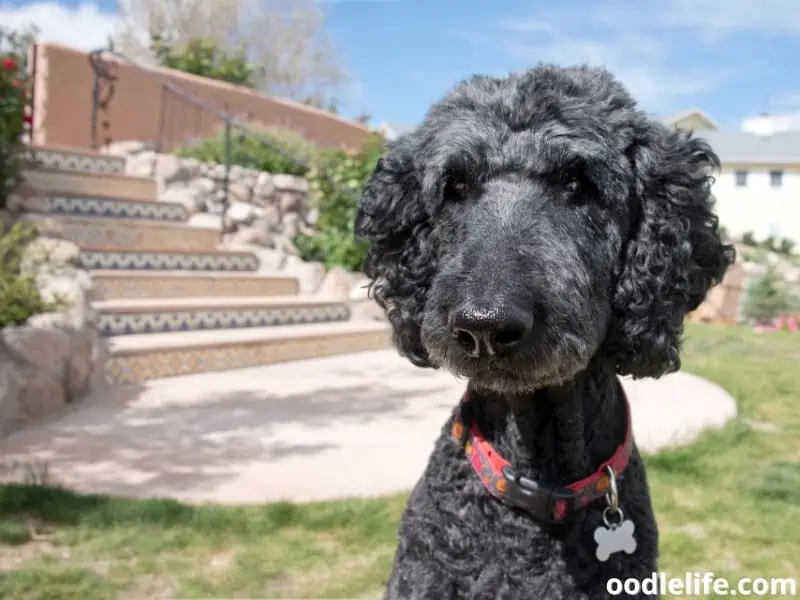
If your Poodle is beside you, take a peek under their chin. You’ll likely see some whiskers poking out from there, too. These are interramal tufts whiskers.
Now, check out your Poodle’s eyebrows. The thick strands of hair there are suborbital whiskers. Finally, the occasional whisker that comes from your Poodle’s cheeks is their genal whiskers.
The technical term for whiskers is vibrissae. But since that’s a mouthful, I’ll stick to referring them to their common name throughout this post.
How To Identify Whiskers?
Aside from knowing their location, there are a few tell-tale signs that the hair you see on your Poodle is a whisker instead of fur. They include:
- Coarse
- Thicker than fur
- Sparsely populated
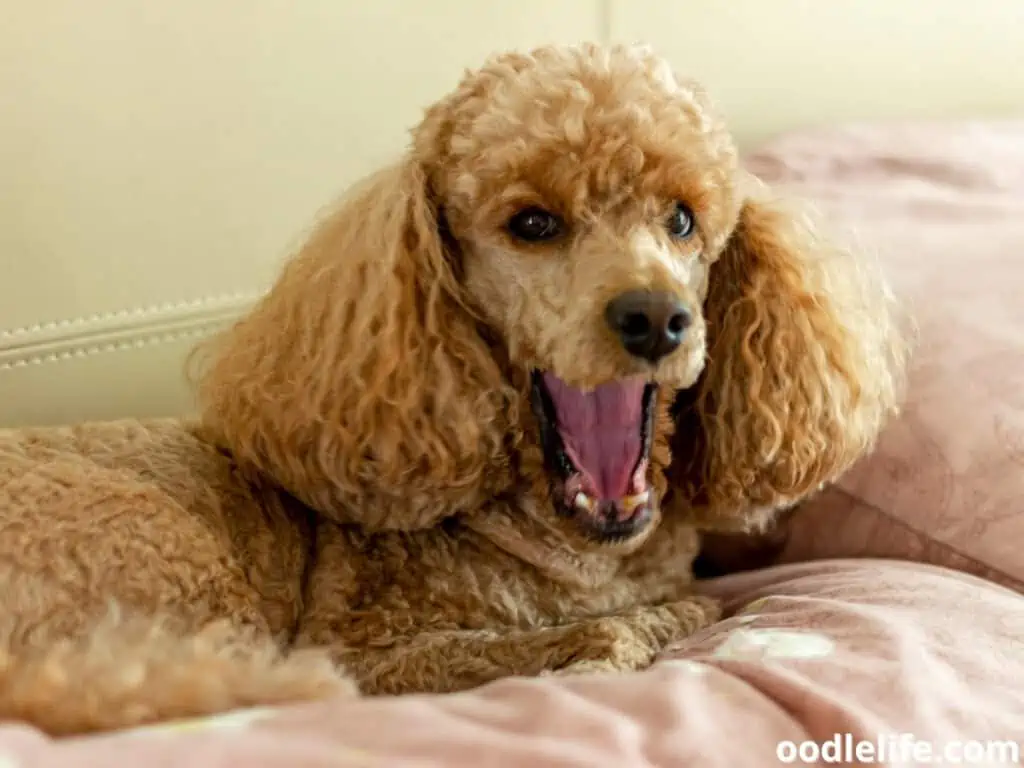
You can’t see it by looking at your Poodle, but their whiskers also have roots that grow three times as deep as their regular hair.
If your Poodle just gave birth to a litter of puppies, you’ll even see their whiskers at birth, given that they’re one of the first hairs they grow. And there’s sound reasoning for this, as you’ll learn next.
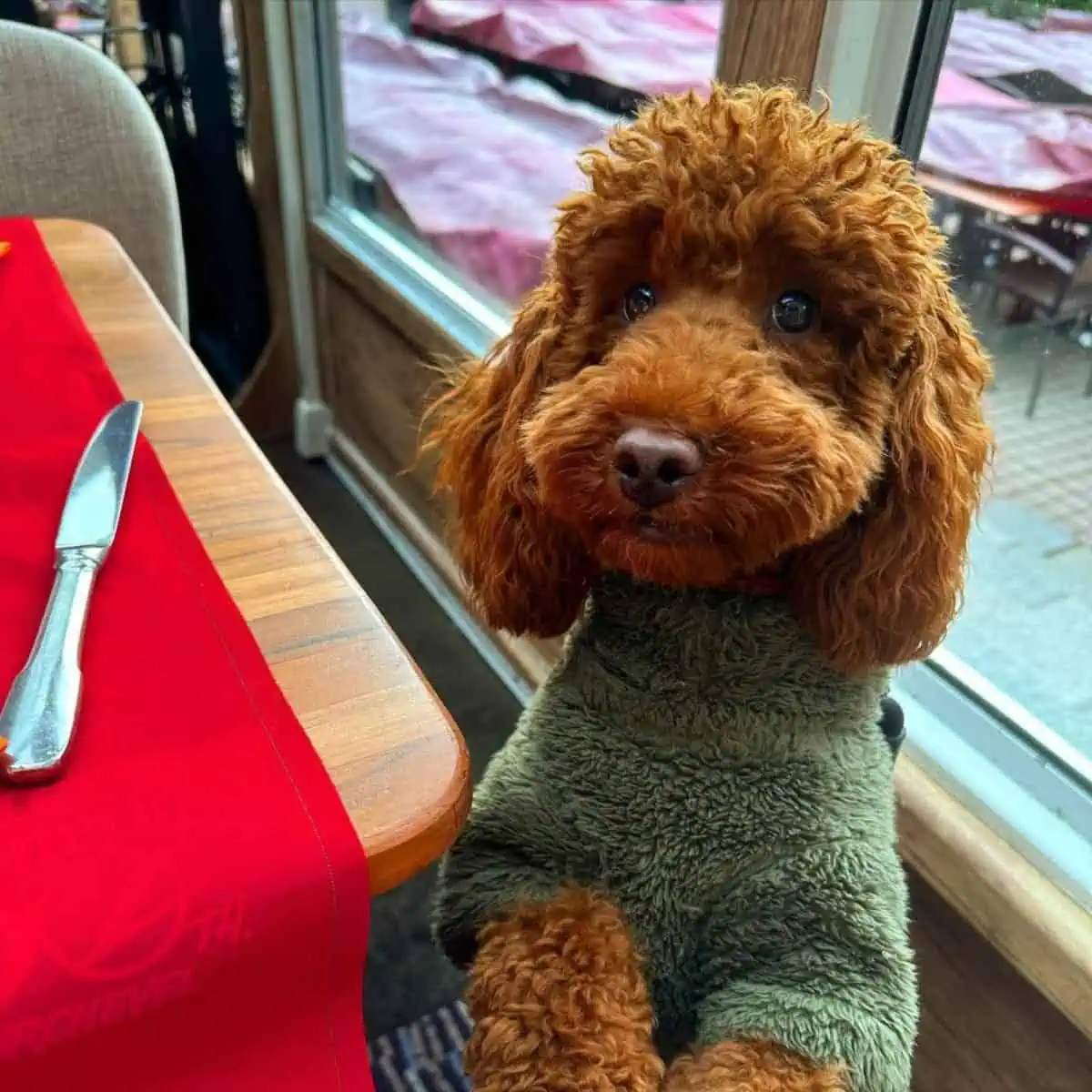
Here’s a fun fact you likely didn’t know: All mammals except humans and monotremes (a type of platypus) don’t have whiskers. And of the mammals with whiskers, the Arctic Fur Seal boasts the longest.
The Role of a Poodle’s Whiskers
Now that you know the answer to the question, “Do Poodles have whiskers?” is yes, let’s explore the role of their whiskers. Doing so will give you a greater appreciation for them if you want to cut or regrow them.
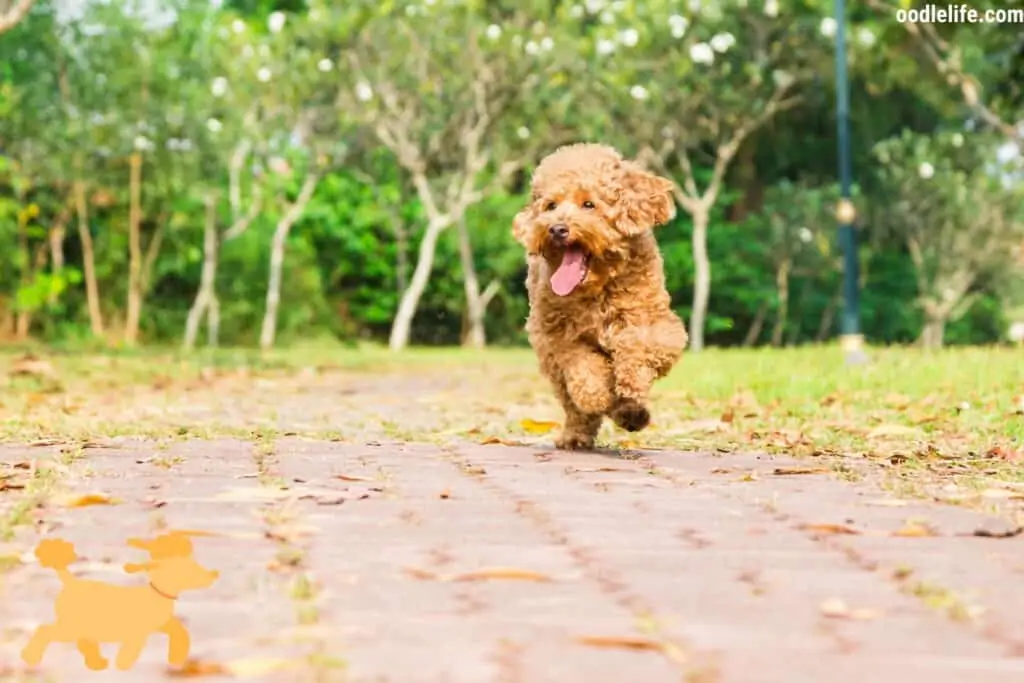
Unlike a human male’s facial hair, whiskers play a vital role in a Poodle’s ability to explore the world. That’s because Poodle whiskers contain many neurons. The result is that when the neurons feel even a tiny amount of pressure as your pet explores their surroundings, they’ll jump into action.
These neurons in the whiskers are an evolutionary adaptation to prevent your Poodle from running into objects, causing a stumble at best and an eye or other facial injury at worst.
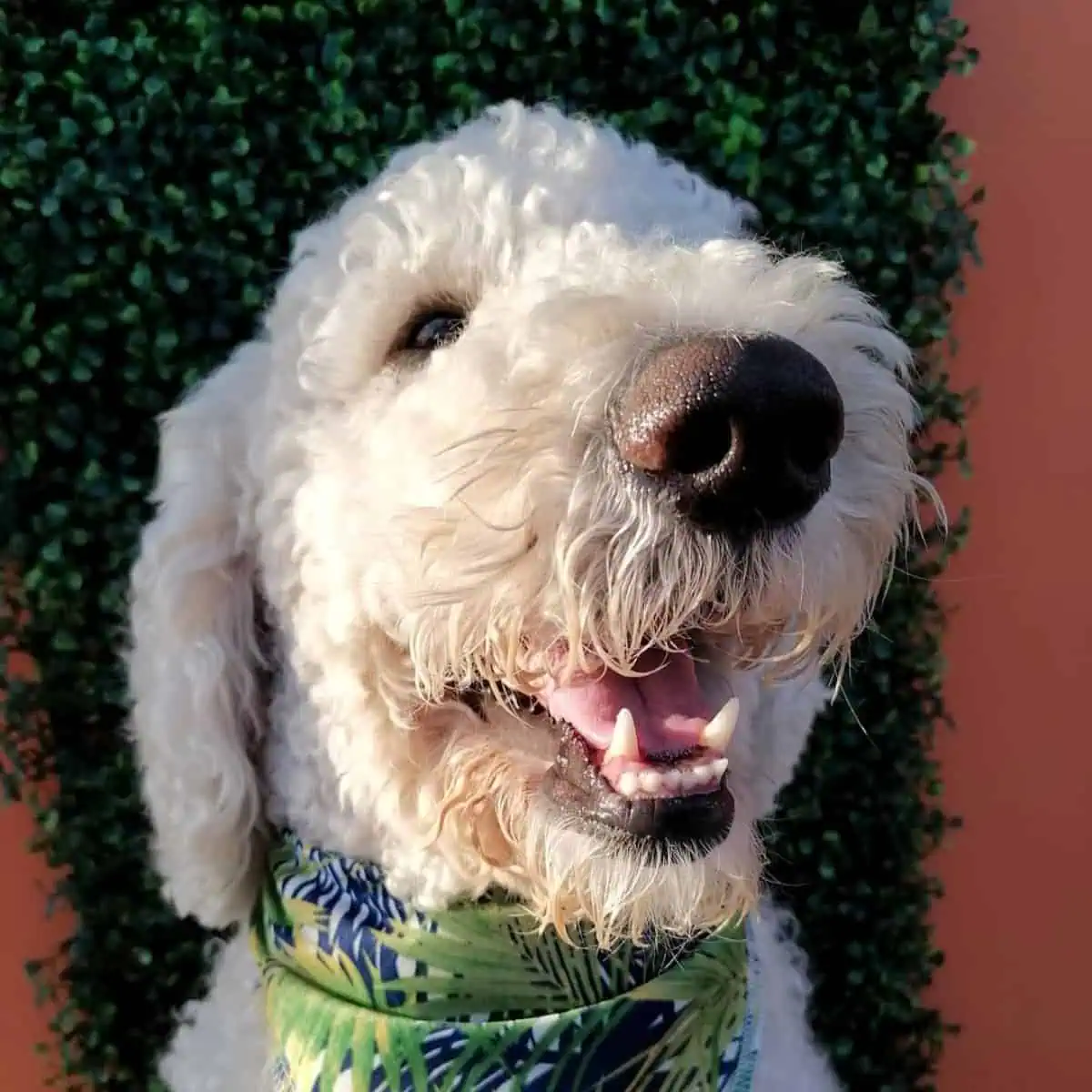
I don’t recommend making a habit of it, but if you’d like to see how your Poodle’s neurons respond to pressure, you can gently touch their whiskers. Your pet will likely turn its head away and close its eyes as an involuntary response.
So, Do Poodle Whiskers Grow Back?
If you’re reading this and horrified that you just went on a rampage grooming your Poodle and shaving off their whiskers in the process, rest easy. Poodle whiskers grow back.

By the time your Poodle’s next grooming session comes around, the whiskers will likely, in theory, already be long enough for another trim again.
But if you’re not showing your Poodle, which requires them to have trimmed whiskers, there’s little reason to shave them. Most groomers automatically leave a Poodle’s whiskers intact, given that they serve a purpose in your dog’s everyday life.
Nevertheless, I recommend letting your groomer know how you want them to handle your Poodle’s whiskers so that you’re on the same page.
When To Trim a Poodle’s Whiskers?
Personally, I only recommend trimming your Poodle’s whiskers if you’ll be showing them. That said, some people find that whiskers get in the way when a Poodle eats or drinks, strewing food and water across their floor.
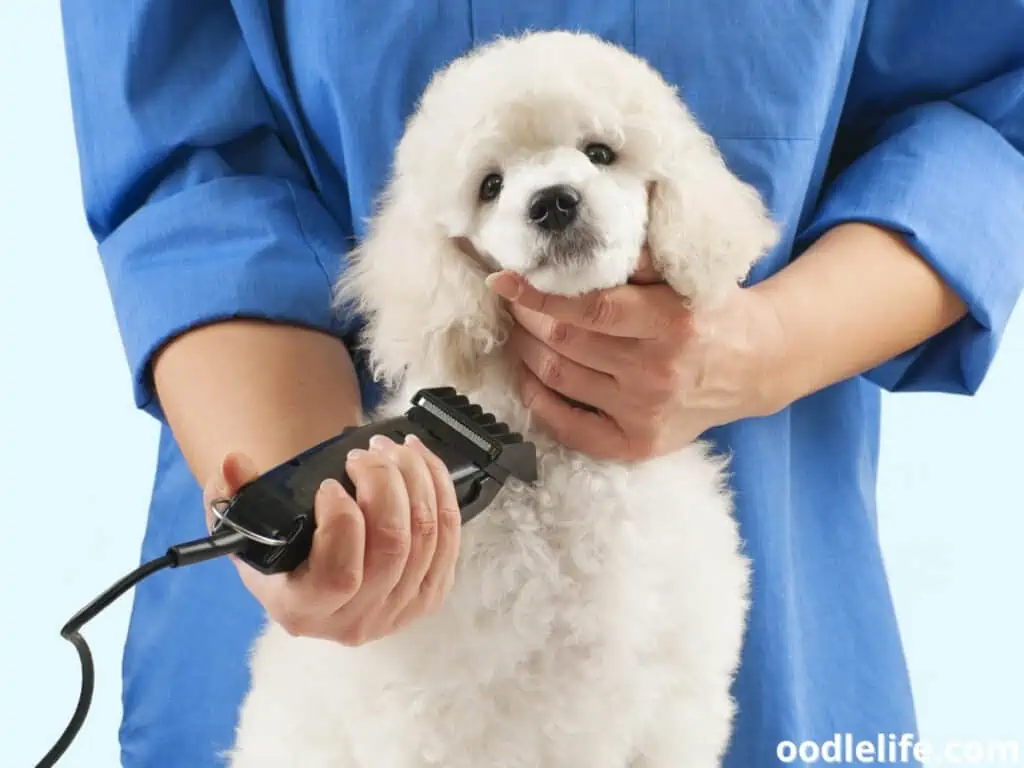
So, if you feel trimming your Poodle’s whiskers is a make-or-break situation for cleanliness, there isn’t too much harm in cutting them.
You should never pluck your Poodle’s whiskers, though. That’s an excruciating process for your dog. In contrast, shaving or cutting their whiskers is as pain-free as cutting your own hair.
How Whisker Trimming Can Harm Your Dog?
Trimming your Poodle’s whiskers is unlikely to cause them to start slamming into everything they encounter. Instead, your dog might walk around more carefully in the dark, where they can’t use their sight to determine the distance from objects.
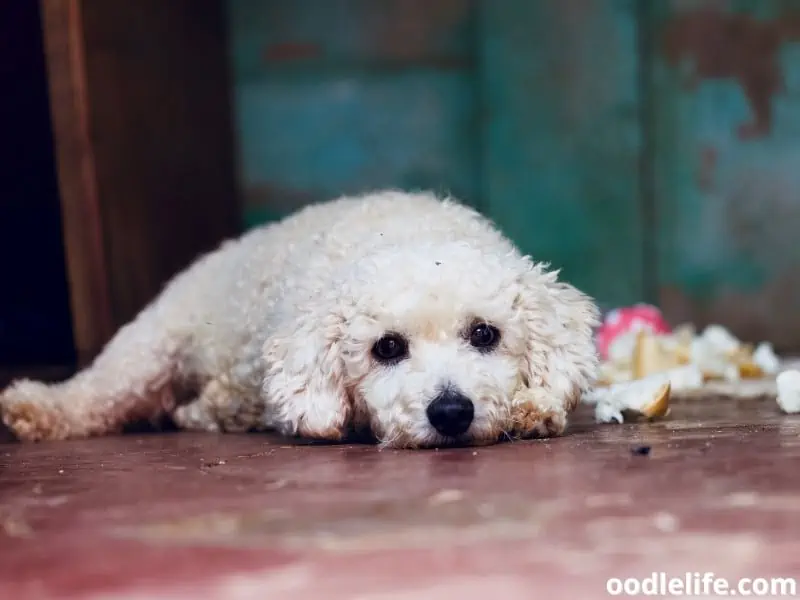
Not only do whiskers help Poodles sense obstacles in their way via physical touch, but there are also air currents that pass through their whiskers which can trigger them to know an object is there as well.
The air current happens by bouncing between your Poodle’s whiskers and the object. It all happens fast, of course. But the neurons in your Poodle’s whiskers are so fine-tuned to their surroundings that they can sense these currents, cautioning your pet to stay clear of an object.
That said, the impact of whisker trimming on a Poodle’s ability to maneuver through its environment during the day appears minimal.
Although it might feel funny to your Poodle if you trim their whiskers, it likely won’t harm them much. But if you frequently go out with your dog at night or if you have an older dog with vision problems, it’s especially important to leave their whiskers intact.
Nevertheless, countries like Germany, Austria, and Switzerland ban the practice of cutting a dog’s whiskers. Their reasoning is that it disables a dog’s sensory organ, and even temporarily doing so opens the possibility for them to suffer a physical injury.
Do You Need To Maintain Whiskers?
No, you don’t need to do anything to maintain your Poodle’s whiskers. Dogs have been going around with whiskers for hundreds of years without human intervention.
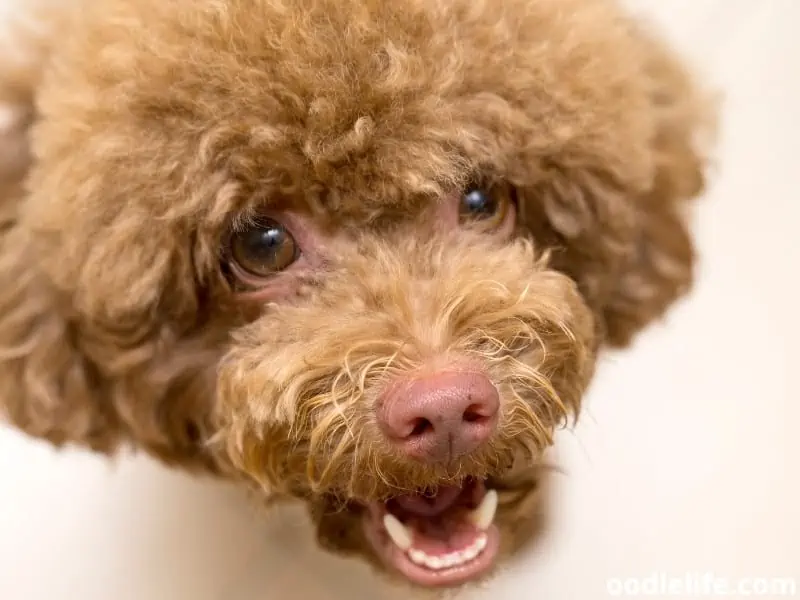
That said, if you notice that your Poodle’s whiskers are starting to fall out, it’s crucial to take them to the vet. Whisker loss can happen for several reasons, including:
- Mange
- Bacterial infection
- Alopecia
Like all hair on your Poodle’s body, their whiskers will naturally shed. However, the difference between shedding and the conditions I listed above is that whisker shedding is gradual. And there’s always another whisker waiting to replace it.
The Bottom Line
So, do Poodles have whiskers? Yes, they do, and they’re in more locations than just around their muzzle.
Personally, I don’t recommend trimming your Poodle’s whiskers unless you’re showing them. A dog’s whiskers play a role in their ability to interact with the environment, and they can help protect them from injury, especially when exploring at night.
The good news is that if you trimmed your Poodle’s whiskers and have regrets, they’ll grow back and won’t impact how they formerly functioned.